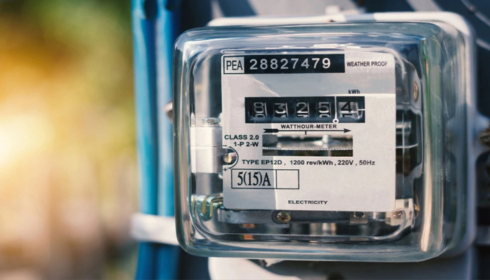Electricity isn’t something most of us think about until the bill arrives. For homeowners, it’s usually a predictable monthly cost, but for businesses, it’s a critical line item that can swing profits up or down. The way energy is priced and delivered to homes versus businesses is more complex than most people realize — and that’s where the conversation around residential vs commercial electricity rates really begins to matter.
Let’s unpack this in plain English — why businesses and households don’t pay the same rates, how those prices are set, and whether one group is actually getting the better deal.
Why Businesses Pay Differently Than Homes
Residential electricity plans are built for convenience and stability. Power companies expect families to use energy mostly during mornings and evenings, when cooking, heating, or cooling systems kick in. The rates are often fixed, predictable, and easier to manage for budgeting purposes.
Commercial consumers, on the other hand, are a different story. Offices, factories, and stores have unique energy needs — heavy machinery, large lighting systems, or 24/7 operations. Because of that, utility companies offer them specialized pricing structures, often with demand-based charges. These rates take into account not just how much power is used, but when it’s used and how efficiently the business manages that demand.
It’s a bit like comparing a small grocery run to wholesale shopping — the pricing logic changes entirely when the scale and pattern of consumption shift.
The Role of Demand Charges and Peak Hours
For most homeowners, electricity bills depend mainly on total usage measured in kilowatt-hours (kWh). But commercial customers often deal with an extra factor: demand charges.
These are based on the highest level of energy drawn at any single point during the billing cycle. Imagine a bakery firing up all its ovens and mixers at 7 a.m. — that surge sets the “peak demand” for the month. Even if usage drops later, that brief moment of high demand can raise the entire bill.
Utilities impose these fees to encourage businesses to balance their energy loads and avoid overloading the grid. It might sound unfair, but it’s a smart system that rewards efficiency and planning — something large operations are usually better equipped to handle than individual homeowners.
So, Is Commercial Electricity Actually Cheaper?
This question pops up a lot: is commercial electricity cheaper than residential?
The answer is — it depends. On paper, commercial rates per kWh can look lower than residential ones, but that’s not the whole story. While businesses often enjoy discounted base rates due to bulk consumption, they also face those hefty demand charges, complex rate tiers, and sometimes time-of-use pricing.
In contrast, residential users usually pay a straightforward per-unit rate, which might seem higher but comes without those unpredictable extras. So while the sticker price per kWh might favor commercial users, the overall cost can balance out once all the variables are factored in.
A small café might pay less per unit but end up with a larger bill if it operates inefficiently or during peak hours. Meanwhile, a homeowner running a modest household could pay slightly more per unit but enjoy a simpler, more stable billing model.
The Impact of Time-of-Use and Tariff Options
Both households and businesses in many regions can opt for “time-of-use” (TOU) plans. These charge different rates depending on when electricity is used — higher during peak demand hours, lower at night or early mornings.
For businesses with flexible schedules, this can be a game-changer. A manufacturer that shifts production runs to off-peak times could slash monthly expenses dramatically. Homes, though, have less flexibility — no one wants to wait until midnight to run the dishwasher or turn on the AC.
The key is awareness. Understanding your usage pattern and comparing tariff options can make a noticeable difference, whether you’re running a household or a hardware store.
Businesses Have More Negotiating Power
Here’s something most people don’t know: commercial users can sometimes negotiate electricity rates directly with suppliers, especially in deregulated energy markets.
This gives them more control — they can compare offers, lock in fixed rates, or even buy renewable energy packages at competitive prices. Homeowners rarely get that level of flexibility.
So while business energy bills are more complicated, they also come with more levers to pull for potential savings. That’s one reason large companies often hire energy consultants or install smart systems to monitor real-time usage — every saved kilowatt adds up across multiple locations.
The Broader Question: Who Has It Better?
When you look closely, the question shifts from “Who pays less?” to “Who uses energy more efficiently?” Efficiency, not just the unit rate, determines the real cost of power.
A high-rise office running outdated HVAC systems can end up paying more per square foot than a family in a modern, energy-efficient home. On the flip side, a well-optimized industrial setup can outperform even the most careful household in cost per kWh.
That’s why when people ask, is electricity cheaper for business or residential, the fairest answer is — cheaper for those who manage it better. The structure might favor businesses in some ways, but discipline and optimization always win.
The Bottom Line
Residential and commercial energy systems are built for different realities. Homes prioritize comfort, simplicity, and predictability. Businesses focus on scale, control, and optimization.
Neither side is getting an unfair advantage — they’re simply playing by different rules. The real opportunity lies in understanding how those rules work for you and adapting your habits around them.
So whether you’re a homeowner trying to trim your monthly bill or a small business owner exploring flexible tariffs, remember that electricity pricing isn’t just about cost per unit. It’s about behavior, timing, and a bit of strategy.
In the end, the smartest users — not necessarily the biggest — are the ones who save the most.


